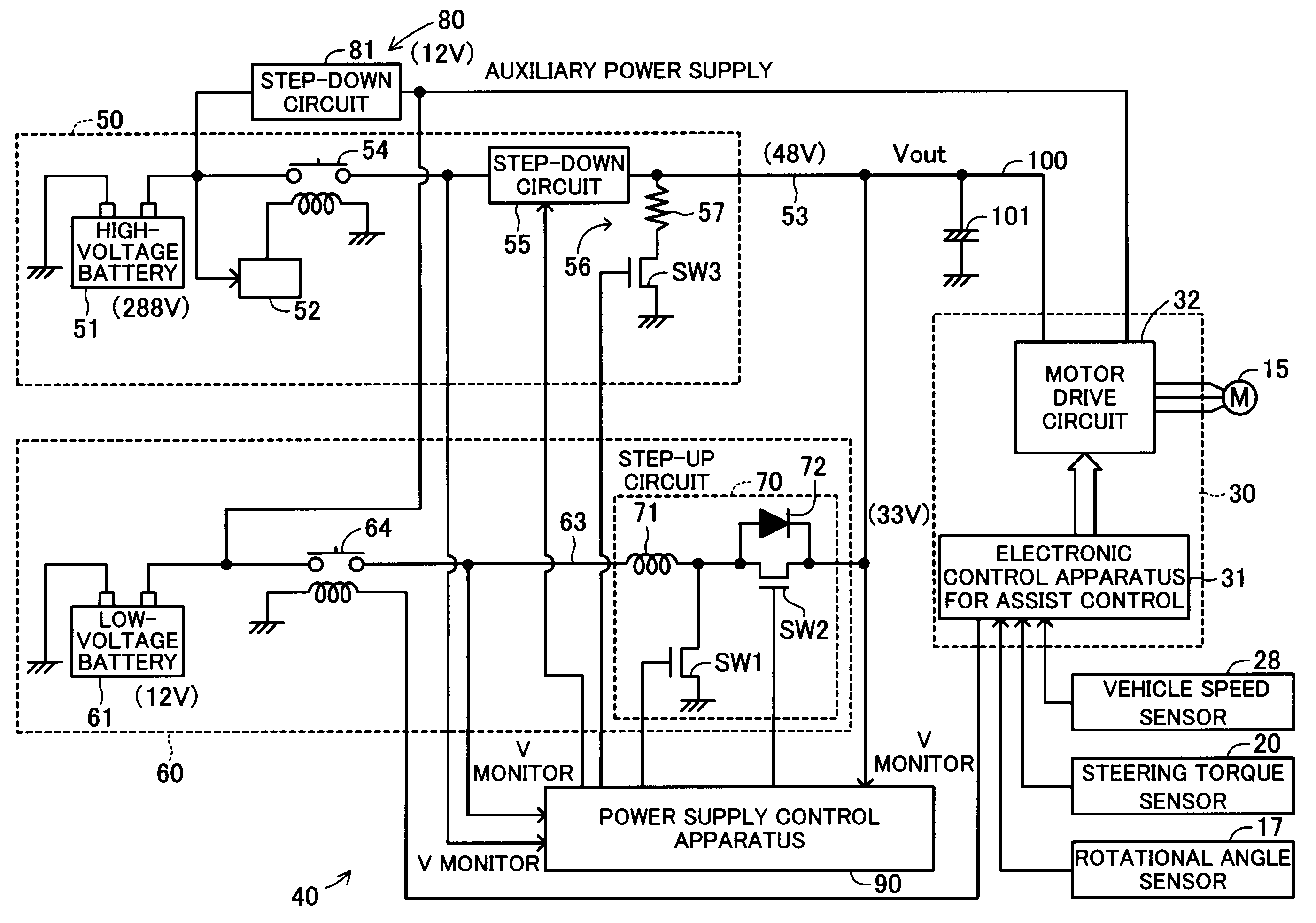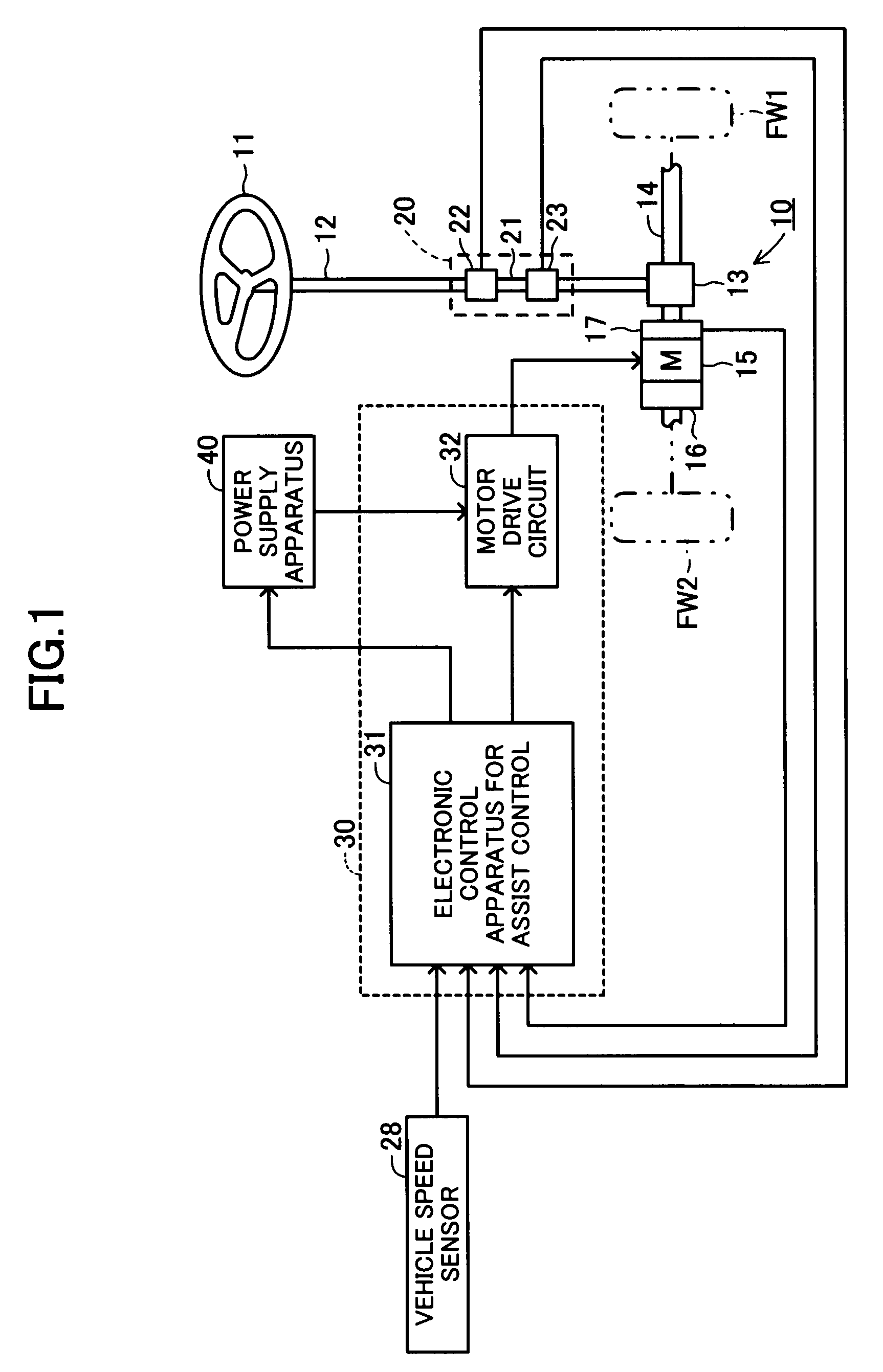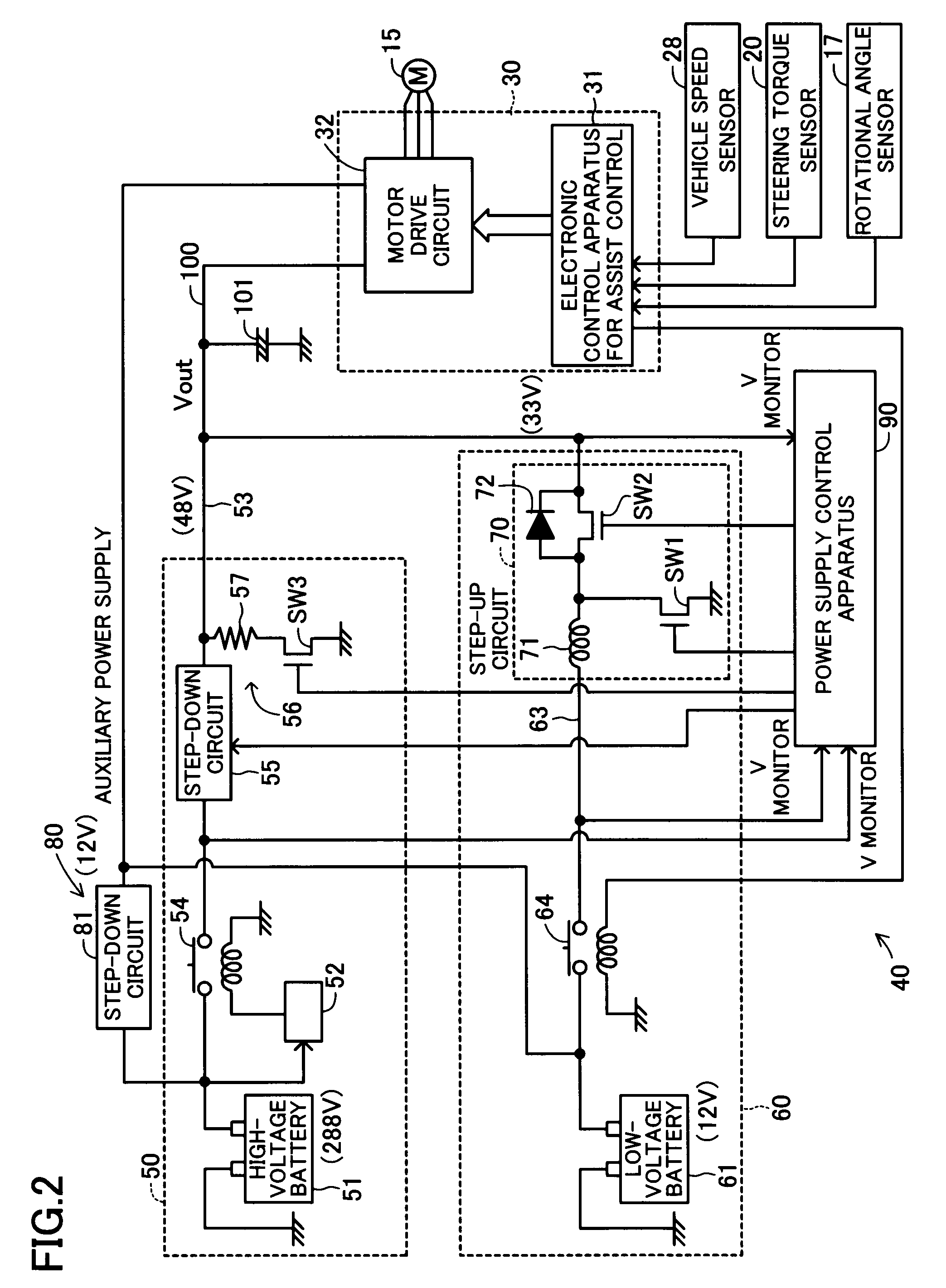Electric power steering system
a technology of electric power steering and power steering shaft, which is applied in the direction of motor/generator/converter stopper, dynamo-electric converter control, transportation and packaging, etc., can solve the problems of increasing the cost of electric power steering power source, and increasing the cost of electric power steering. , to achieve the effect of suppressing the cost increas
- Summary
- Abstract
- Description
- Claims
- Application Information
AI Technical Summary
Benefits of technology
Problems solved by technology
Method used
Image
Examples
first embodiment
[0058]FIG. 4 shows a power supply control routine according to a The power supply control routine is stored in ROM of the power supply control apparatus 90 in the form of a control program, and is repeatedly executed at short intervals.
[0059]The power supply control routine is started after the relays 54 and 64 are turned on as a result of an unillustrated ignition switch being turned on.
[0060]First, in step S1, the output voltage Vout is detected, and a determination is made as to whether or not the detected voltage is higher than a regeneration determination voltage VK1 (e.g., 50 V). This determination processing is performed so as to determine whether or not regenerative power is generated from the electric motor 15. The regeneration determination voltage VK1 is set such that when regenerative power is generated, the output voltage Vout exceeds the regeneration determination voltage VK1.
[0061]When regenerative power is not generated (S1: No), in step S2 subsequent to step S1, a ...
second embodiment
[0073]FIG. 5 shows the power supply control routine according to the The power supply control routine is stored in the ROM of the power supply control apparatus 90 in the form of a control program, and is repeatedly executed at short intervals.
[0074]Since the processing of step S11 to S14 is identical with the processing of step S1 to S4 of the first embodiment shown in FIG. 4, only a simplified description of the processing of step S11 to S14 will be provided.
[0075]When in step S11 the detected output voltage Vout is not higher a regeneration determination voltage VK1 (e.g., 50 V), the power supply control apparatus 90 determines that regenerative power is not generated, and proceeds to step S12 so as to determine whether or not the output voltage Vout is lower than the rated output voltage V2H (target voltage: 33 V) of the secondary power supply circuit 60. When the primary power supply circuit 50 operates normally, a “No” determination is made. In this case, since supply of elec...
third embodiment
[0081]Next, there will be described a power supply control routine which processing is performed by the power supply control apparatus 90.
[0082]FIG. 6 shows the power supply control routine according to the third embodiment. The power supply control routine is stored in the ROM of the power supply control apparatus 90 in the form of a control program, and is repeatedly executed at short intervals.
[0083]The present power supply control routine is started after the relays 54 and 64 are turned on as a result of the unillustrated ignition switch being turned on.
[0084]When the present power supply control routine is started, in step S21, the output voltage Vout is first detected, and a determination is made as to whether or not the detected voltage is higher than a regeneration determination voltage VK1 (e.g., 50 V). When the detected voltage is higher than the regeneration determination voltage VK1, the power supply control apparatus 90 determines that the electric motor 15 is generati...
PUM
 Login to View More
Login to View More Abstract
Description
Claims
Application Information
 Login to View More
Login to View More - R&D
- Intellectual Property
- Life Sciences
- Materials
- Tech Scout
- Unparalleled Data Quality
- Higher Quality Content
- 60% Fewer Hallucinations
Browse by: Latest US Patents, China's latest patents, Technical Efficacy Thesaurus, Application Domain, Technology Topic, Popular Technical Reports.
© 2025 PatSnap. All rights reserved.Legal|Privacy policy|Modern Slavery Act Transparency Statement|Sitemap|About US| Contact US: help@patsnap.com



